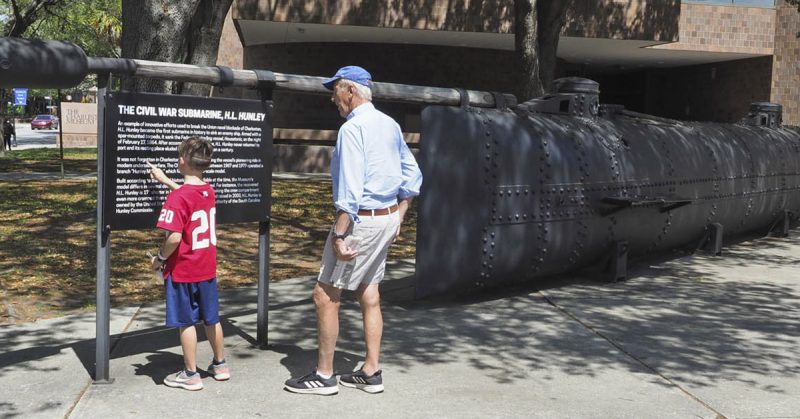They perished instantly, having been deprived of oxygen as their lungs filled with blood. If they’d survived, the shock to the brain could have caused severe trauma too.
Nineteen years have passed since the HL Hunley was gently raised from the sea bed off Charleston, South Carolina. After many years of research, it now appears that the crew may have unexpectedly perished because the shock wave from the explosion they’d set off irreparably damaged their lungs.
Back in 2000, Hunley was brought into Charleston under the iconic modern bridge which was lined with thousands of people. Great celebrations greeted the 40-foot iron hulk as it came in slung from a row of fabric strops under a purpose-built giant metal frame.
Hunley was built in 1862.It was designed to hold a crew of eight: seven men to turn the hand-cranked propeller which gave the boat propulsion, and one to steer the vessel. Despite two accidents in testing which resulted in 13 fatalities, Hunley was still put into service.
On February 17, 1864, Hunley went in search of a Union ship. The 207-foot long-armed sloop USS Housatonic became its target. Hunley laid a charge next to the ship which was part of the blockading squadron off Charleston. When the charge went off, Housatonic sank, taking five crew members with it.
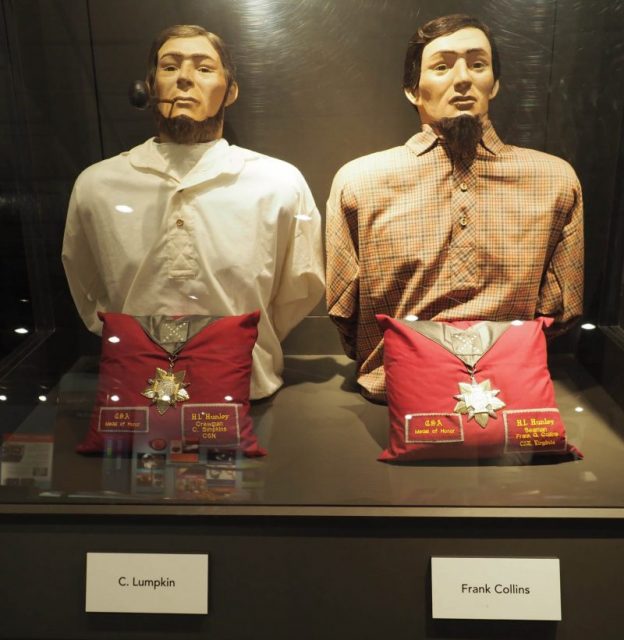
However, the crew in Hunley who sat cramped and hunched over a propeller winding crank that ran most of the length of the boat were also doomed by their own charge.
This report from US Navy Records, made by Lieutenant Higginson, executive officer of the USS Housatonic at the time explains what was seen from the ship on February 18, 1864:
“SIR: I have the honor to make the following report of the sinking of the U. S. S. Housatonic, by a rebel torpedo off Charleston, S. C., on the evening of the 17th instant.
“About 8:45 p. m. the officer of the deck, Acting Master J. K. Crosby, discovered something in the water about 100 yards from and moving toward the ship. It had the appearance of a plank moving in the water. It came directly toward the ship, the time from when it was first seen till it was close alongside being about two minutes.
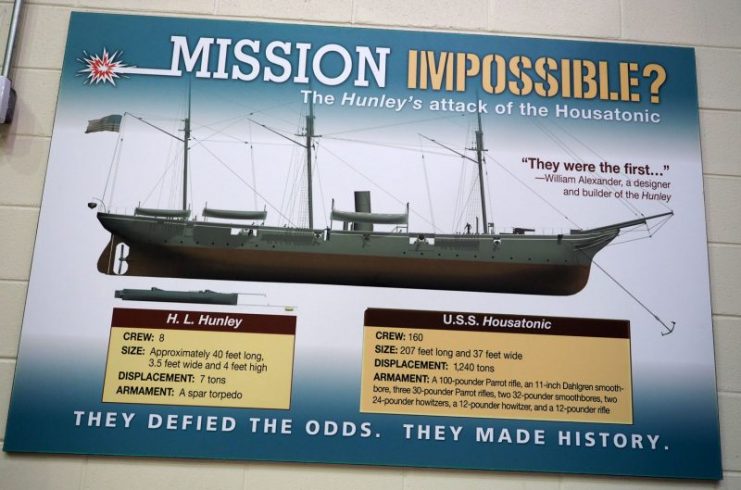
“During this time the chain was slipped, engine backed, and all hands called to quarters.
“The torpedo struck the ship forward of the mizzenmast, on the starboard side, in a line with the magazine. Having the after pivot gun pivoted to port we were unable to bring a gun to bear upon her.
“About one minute after she was close alongside the explosion took place, the ship sinking stern first and heeling to port as she sank.
“Most of the crew saved themselves by going into the rigging, while a boat was dispatched to the Canandaigua. This vessel came gallantly to our assistance and succeeded in rescuing all but the following-named officers and men, viz, Ensign E. C. Hazeltine, Captain’s Clerk C. O. Muzzey, Quartermaster John Williams, Landsman Theodore Parker, Second-Class Fireman John Walsh.
“The above officers and men are missing and are supposed to have been drowned.
“Captain Pickering was seriously bruised by the explosion and is at present unable to make a report of the disaster.”
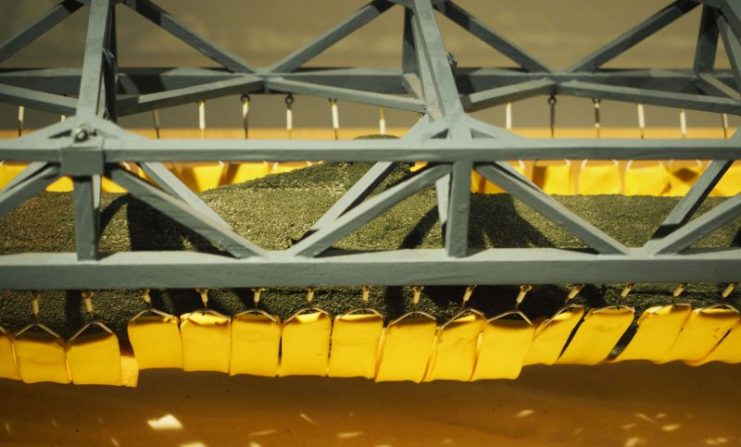
After sinking the ship in that historic action, the whereabouts of Hunley remained unknown until its wreck was discovered. There is a debate about whether it was wreck-enthusiast and author, Clive Cussler, who found the vessel, or whether it was underwater archeologist E. Lee Spence.
Hunley‘s identity was finally confirmed after divers saw part of the boat that was recognized from drawings of HL Hunley. The wreck was 100 yards away on the seaward side from where Housatonic had been located.
The whole crew went down in that submarine. Reconstructions of their torsos and heads have been painstakingly modeled by forensic reconstruction experts and are displayed at the Clemson University laboratory and museum. The boat itself is preserved in a giant swimming pool of water and sodium hydroxide.
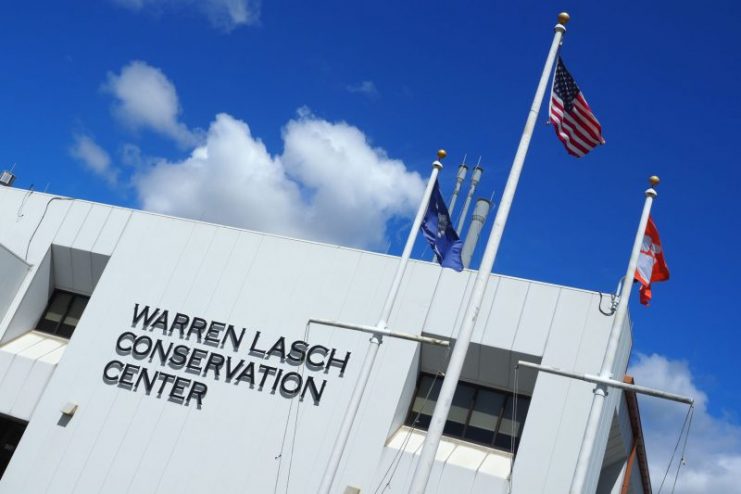
Made of wrought iron, the hull remains intact. The interior was painstakingly searched, with every small item being saved including the complete skeletons of all the crew. It was from those skulls that the preservation teams were able to accurately bring the faces of the crew to life using medical modeling techniques.
Currently, researchers and staff are working on some of the other personal items of the crew. Some handmade leather shoes are the best-preserved items of clothing to survive. They are being carefully conserved and will go on display at some time in the near future.
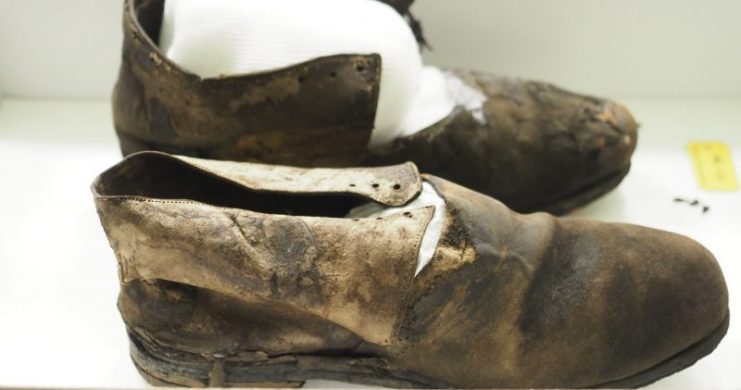
Another artifact tells the personal story of the boat’s commanding officer. Before taking on the role as skipper, Lt George Dixon was at the battle of Shiloh where it was rumored that his leg was saved by a bullet hitting a gold coin in his pocket.
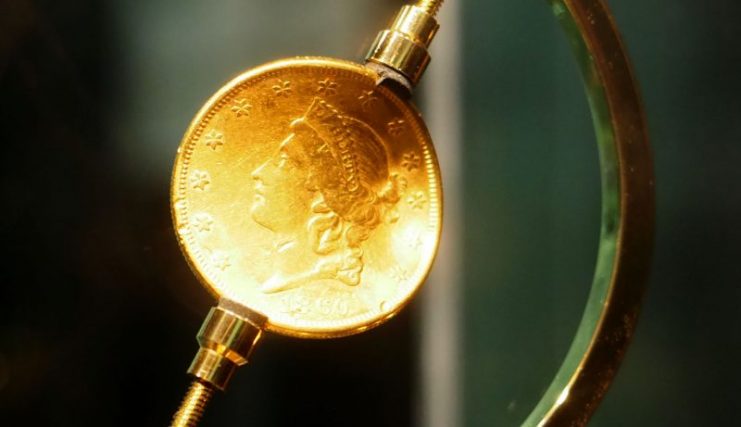
The preservation experts have now brought that story back into the public eye. During a search of the commander’s position in the bow section, his lucky bent gold coin was in the sediment around where his skeleton had been. That coin and some other items of jewelry are now on display.

There have been many volunteers helping with this ongoing project over the years. Gradually, the full story is coming together. Many items, including the hull of the boat (once its preservation bath of sodium hydroxide has been drained), will be on display.
Currently, the museum is open only at weekends and is housed in a former US Navy building which is now part of a Clemson University laboratory facility. It is proposed that the boat and the whole collection will go to a brand new facility in Charleston.
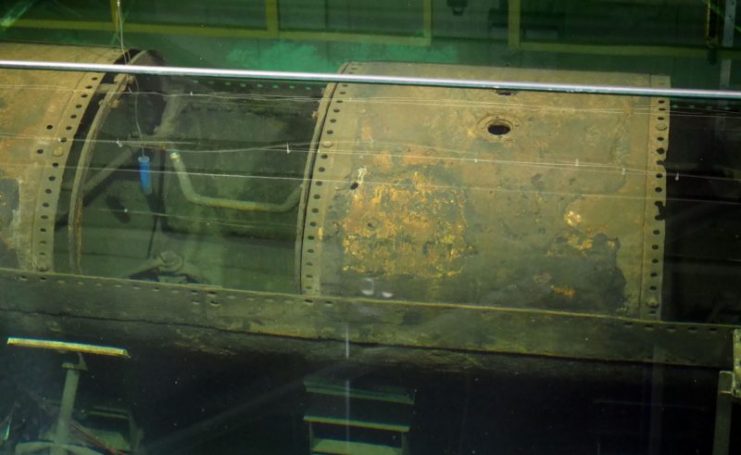
Before this latest theory of Hunley‘s demise came to the fore, there were many ideas as to what proved fatal to the crew and the boat. Even now, some people have doubts about the most recent findings.
An inch by inch examination of the craft has, so far, given no indication of what might have caused it to disappear.
For instance, no obvious badly leaking plates were discovered. No hatches were loose or had been partly opened. The emergency ballast weights that would have allowed the boat to surface quickly were still in place. There were no holes from any enemy fire either.
There was a report that the crew of Henley signaled their success to Battery Marshall several miles away, which suggests that they did survive the blast.
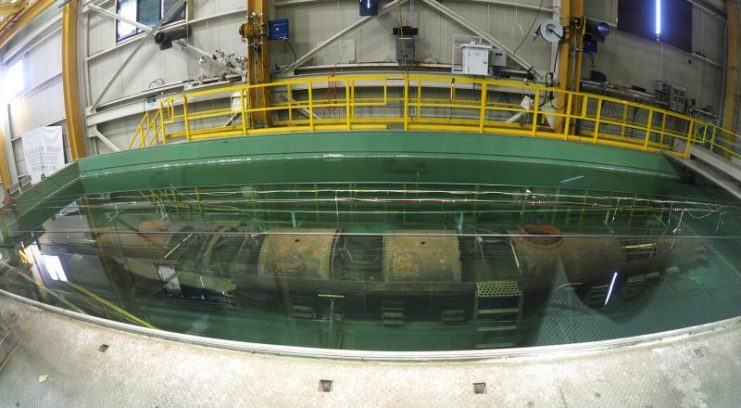
Since the snorkels were not deployed, it was suggested that perhaps a lack of oxygen had resulted in the crew perishing. It was theorized that, given that seven of the men in the confined space were winding the propeller, they might have lost track of time and accidentally used up all the air.
If there was a sudden the lack of oxygen, they might have been unable to function normally or save themselves if they had little or no energy left to open a heavy hatch or drop the weights. This would tie-in with the fact that the remains of the men were found at their posts, indicating that they had not tried to escape.
A full-size cut out of part of the boat is on display inside the museum which gives an idea of the scale and size. A few miles away, outside the Charleston Museum there is a full-size replica.
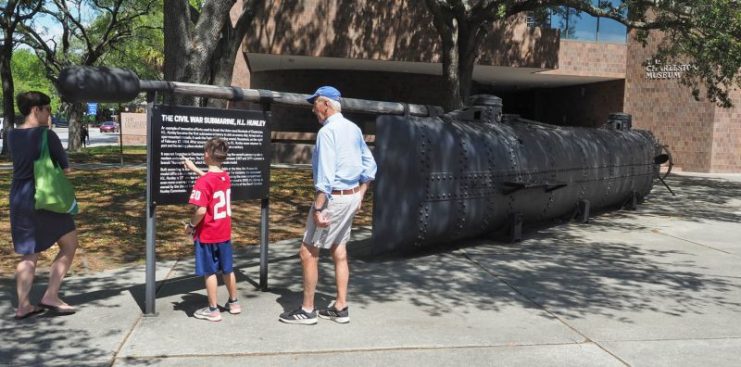
When you see the space inside this early submersible machine, trying to understand how they even managed to get in there in the first place seems to be a miracle. With one member being at least 6 feet tall, there was little clearance in a vessel that was just three feet six inches wide and four feet high!
The current and leading idea on what caused the loss of Hunley comes from Dr. Rachel Lance of Duke University, who concluded they expired due to the shockwave from their own torpedo.
Since there is no other sign of hull damage, the report indicates that the men perished as a result of the blast from the 135lb black powder charge that they themselves had set off. The explosion occurred between 16-42 feet away.
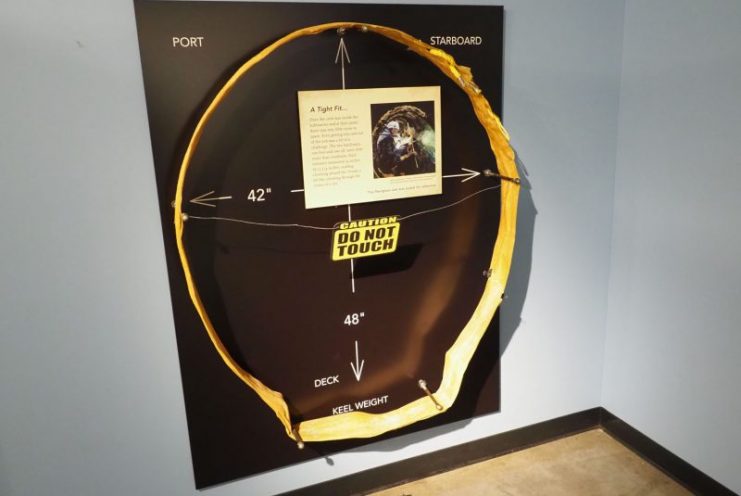
Dr. Lance’s evidence claims the shock wave would have passed through their bodies, severing tiny blood vessels in their lungs. They perished instantly, having been deprived of oxygen as their lungs filled with blood. If they’d survived, the shock to the brain could have caused severe trauma too.
Read another story from us: Fort Sumter & The First Shots of the American Civil War
This might be the final answer to Henley’s mysterious sinking, or there might be further discoveries which suggest alternative explanations. Nevertheless, Hunley‘s fate remains an amazing personal story of eight men and the remnants of boat and crew are well worth checking out for yourself when you’re next in Charleston.
With direct flights from the London Heathrow to Charleston, getting to see the exhibition from the UK and Europe is reasonably straightforward. Flights with British Airways run from April until late October HERE
